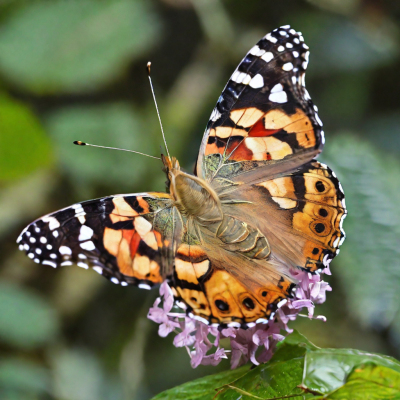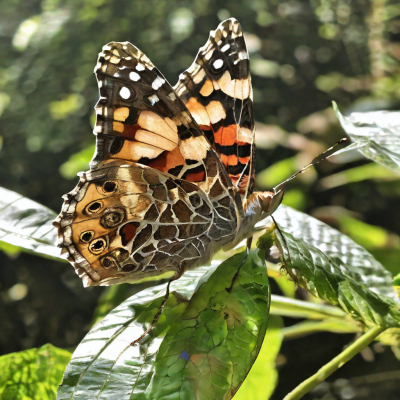In a garden fair, where flowers bloom,
A delicate creature, in colors attuned.
With wings so graceful, like a work of art,
The butterfly dances, a thing apart.
Its wings, a canvas of vibrant hues,
Painted by nature, a masterpiece to choose.
From gentle pastels to bold and bright,
The butterfly brings joy, a pure delight.
It flutters and floats on a gentle breeze,
Exploring the world with effortless ease.
From flower to flower, it gracefully lands,
Spreading beauty with its delicate hands.
The butterfly, a symbol of transformation,
From caterpillar to winged creation.
A reminder that change can be beautiful,
Emerging from darkness, a soul so full.
Oh, butterfly, with your wings so grand,
You inspire us to reach for the sky and expand.
A symbol of freedom, lightness, and grace,
You bring a touch of magic to every place.
So let us cherish the butterfly's flight,
And marvel at the wonder, both day and night.
For in its presence, we find a sense of peace,
A reminder that beauty will never cease.
This poem is dedicated to the butterfly,
A creature that enchants both earth and sky.
May its delicate presence forever inspire,
And fill our hearts with love and desire.
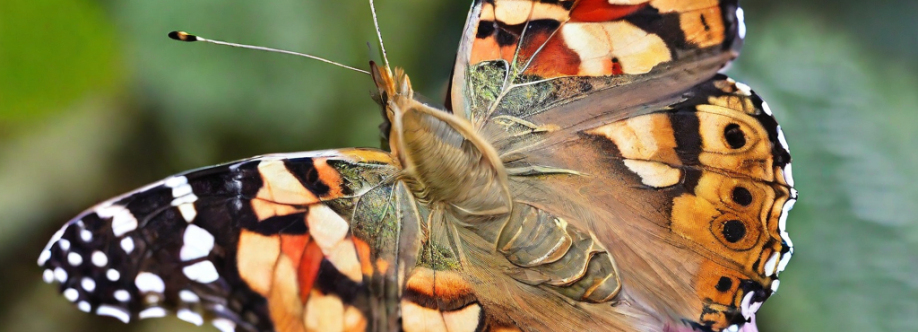

The World of Butterflies
Swallowtail Butterfly (Papilio spp.)
The Swallowtail Butterfly (Papilio spp.) is a species of butterfly that is known for its striking appearance and distinctive tail-like protrusions on its hindwings. There are over 200 species of Swallowtail Butterflies, which can be found in various parts of the world, including North America, Central America, South America, Europe, Asia, and Africa.
Physical Characteristics:
* The Swallowtail Butterfly has a distinctive black and yellow or orange coloration, with a striking pattern of stripes or spots on its wings.
* The forewings are typically black with yellow or orange stripes, while the hindwings are black with yellow or orange spots.
* The butterfly has a distinctive tail-like protrusion on its hindwings, which is thought to help with balance and navigation during flight.
* The body of the butterfly is dark brown or black with white or yellow markings.
Life Cycle:
* The Swallowtail Butterfly undergoes a complete metamorphosis, with four distinct life stages: egg, larva, pupa, and adult.
* The eggs are laid on plants in the carrot family (Apiaceae), such as wild carrot (Daucus carota) or cultivated carrot (Carum carvi).
* The caterpillars hatch from the eggs and feed on the leaves and flowers of the host plant.
* When the caterpillar is fully grown, it forms a chrysalis and undergoes metamorphosis.
* The adult butterfly emerges from the chrysalis and begins its reproductive cycle.
Behavior and Migration:
* The Swallowtail Butterfly is known for its migratory behavior, with individuals traveling long distances in search of food and suitable habitat.
* The butterflies migrate in large groups, often flying at high altitudes and following the direction of the sun.
* During the migration, the butterflies stop to feed on nectar-rich flowers and drink water from wetlands.
* The Swallowtail Butterfly is also known for its territorial behavior, with males defending their territories from other males.
Conservation Status:
* The Swallowtail Butterfly is considered a species of special concern due to its declining population.
* The main threats to the Swallowtail population include habitat loss and degradation, pesticide use, and climate change.
* Conservation efforts include planting wildflowers and other native plants, reducing pesticide use, and protecting butterfly habitats.
Interesting Facts:
* The Swallowtail Butterfly is one of the most recognizable butterfly species in the world, with its distinctive tail-like protrusions on its hindwings.
* The butterfly's striking coloration is thought to be a form of aposematic coloration, which warns potential predators that the butterfly is toxic or distasteful.
* The Swallowtail Butterfly is also known for its unique migratory behavior, with individuals traveling thousands of miles each year.
In conclusion, the Swallowtail Butterfly (Papilio spp.) is a fascinating species with striking coloration and distinctive wing patterns. It is an important pollinator and a vital part of many ecosystems around the world, and conservation efforts are necessary to protect this species and its habitat.
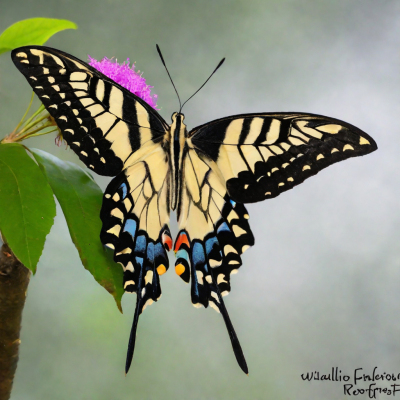

Monarch Butterfly (Danaus plexippus)
The Monarch Butterfly (Danaus plexippus) is a species of milkweed butterfly that is native to North America. It is known for its striking orange and black coloration, which serves as a warning to potential predators that it is toxic.
Physical Characteristics:
* The Monarch Butterfly has a wingspan of approximately 4 inches (10 cm)
* The wings are rectangular in shape and have a distinctive black vein pattern
* The background color of the wings is orange, with black margins and veins
* The body is black and white, with white spots on the abdomen
* The antennae are black and white, with a distinctive white club-like shape at the tip
Life Cycle:
* The Monarch Butterfly undergoes a complete metamorphosis, with four distinct life stages: egg, larva, pupa, and adult
* The eggs are laid on milkweed plants, which are the only plants that Monarch caterpillars can feed on
* The caterpillars hatch from the eggs and feed on the milkweed leaves for several weeks
* When the caterpillar is fully grown, it forms a chrysalis and undergoes metamorphosis
* The adult butterfly emerges from the chrysalis and begins its reproductive cycle
Behavior and Migration:
* Monarch Butterflies are known for their annual migrations from Canada and the United States to Mexico, which can be up to 3,000 miles (4,800 km) round trip
* The butterflies migrate in large groups, following the same general path each year
* During the migration, the butterflies stop to feed on nectar-rich flowers and drink water from wetlands
* Monarchs are also known for their territorial behavior, with males defending their territories from other males
Conservation Status:
* The Monarch Butterfly is considered a species of special concern due to its declining population
* The main threats to the Monarch population include habitat loss and degradation, pesticide use, and climate change
* Conservation efforts include planting milkweed and other native flowers, reducing pesticide use, and protecting Monarch habitats
Interesting Facts:
* Monarch Butterflies are the only butterflies that migrate north and south, rather than east and west
* Monarchs have a unique relationship with milkweed, which contains toxic chemicals that are stored in the butterfly's body and make it unpalatable to predators
* Monarchs are able to survive in temperatures as low as -20°F (-29°C) and as high as 100°F (38°C)
In conclusion, the Monarch Butterfly (Danaus plexippus) is a fascinating species with distinct physical characteristics, a complex life cycle, and interesting behaviors. It is an important pollinator and a vital part of North American ecosystems, and conservation efforts are necessary to protect this species and its habitat.
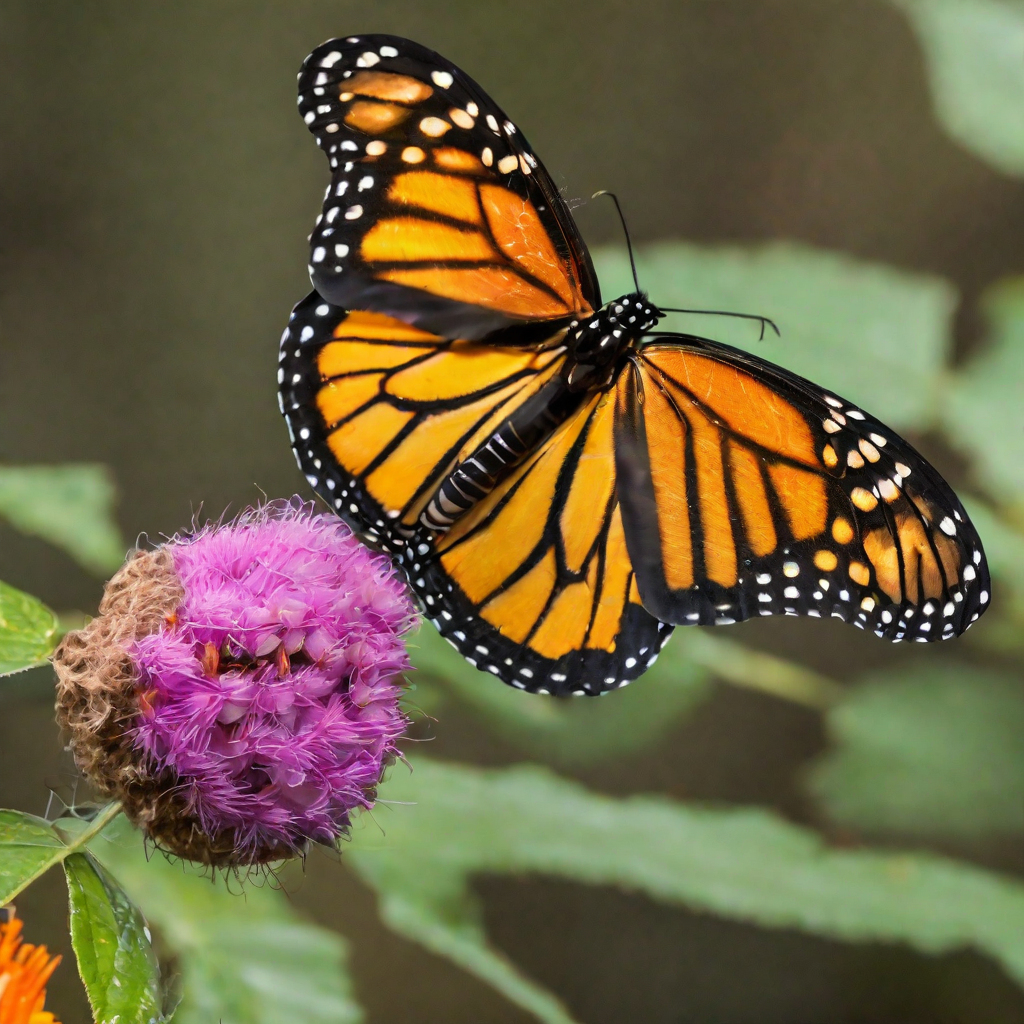
A dedicated Pod for Butterflies
Painted Lady Butterfly (Vanessa cardui)
The Painted Lady Butterfly (Vanessa cardui) is a species of butterfly that is native to North America and is known for its striking coloration and distinctive wing pattern. It is a member of the Nymphalidae family and is often found in fields, meadows, and gardens.
Physical Characteristics:
* The Painted Lady Butterfly has a wingspan of approximately 2.5 to 3.5 inches (6.4 to 8.9 cm).
* The wings are rectangular in shape and have a distinctive black, brown, and orange pattern.
* The forewings have a black base color with white markings, while the hindwings have a brown base color with white and orange markings.
* The body is dark brown or black with white spots.
Life Cycle:
* The Painted Lady Butterfly undergoes a complete metamorphosis, with four distinct life stages: egg, larva, pupa, and adult.
* The eggs are laid on plants in the carrot family (Apiaceae), such as wild carrot (Daucus carota) or cultivated carrot (Carum carvi).
* The caterpillars hatch from the eggs and feed on the leaves and flowers of the host plant.
* When the caterpillar is fully grown, it forms a chrysalis and undergoes metamorphosis.
* The adult butterfly emerges from the chrysalis and begins its reproductive cycle.
Behavior and Migration:
* The Painted Lady Butterfly is known for its migratory behavior, with individuals traveling long distances in search of food and suitable habitat.
* The butterflies migrate in large groups, often flying at high altitudes and following the direction of the sun.
* During the migration, the butterflies stop to feed on nectar-rich flowers and drink water from wetlands.
* The Painted Lady Butterfly is also known for its territorial behavior, with males defending their territories from other males.
Conservation Status:
* The Painted Lady Butterfly is considered a species of special concern due to its declining population.
* The main threats to the Painted Lady population include habitat loss and degradation, pesticide use, and climate change.
* Conservation efforts include planting wildflowers and other native plants, reducing pesticide use, and protecting butterfly habitats.
Interesting Facts:
* The Painted Lady Butterfly is one of the most widely distributed butterfly species in the world, with a range that extends across North America, Europe, Asia, and Africa.
* The butterfly's distinctive coloration is thought to be a form of aposematic coloration, which warns potential predators that the butterfly is toxic or distasteful.
* The Painted Lady Butterfly is also known for its unique migratory behavior, with individuals traveling thousands of miles each year.
In conclusion, the Painted Lady Butterfly (Vanessa cardui) is a fascinating species with striking coloration and distinctive wing pattern. It is an important pollinator and a vital part of North American ecosystems, and conservation efforts are necessary to protect this species and its habitat.
